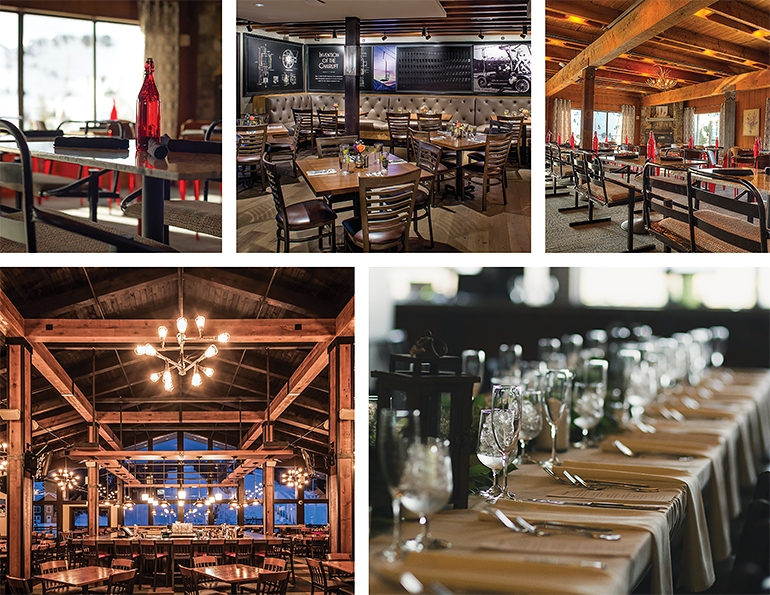It may have been the most obvious of watershed moments. Stratton Mountain Resort’s VP of retail/rental operations John Lapointe was meandering through the main base lodge one busy midday a few years back when he came across the unthinkable: a guest in ski gear, sitting on the base lodge floor, lunch in lap. “It’s ridiculous to see someone sitting on the floor with a tray when we’re trying to be who we are,” says Lapointe.
Since then, Stratton’s base lodge and food and beverage areas have been expanded and renovated to not only improve the guest experience, but also boost productivity and efficiency in the back of the house. Millions were spent on the project. The resort is already seeing a return, and meeting its own expectations for level of service.
Stratton is not alone. Across the industry, resorts that have settled for serving a decent burger, fountain sodas, and giant cookies at the register have seen a shift: Skiers and riders expect more from their overall resort experience. And dining is at the top of that list.
However, updating food and beverage spaces properly requires thought and patience. Resorts must balance a new or revamped space with a modern take on food prep and service along with a dollop of history. To play off the old Girl Scout’s tune, resorts must make new space but keep the old, because one is silver and the other’s gold.
In other words, don’t throw out awesome history just to make things smoother.
Sun Valley’s Historic Update
Is there any other resort marinating in history more than Sun Valley? The list of celebrities who frequented (and still frequent) the place is endless. The Hokey Pokey was allegedly invented there. Smith Optics is said to have invented ski goggles there. Warren Miller found his voice there. And the railroad history runs deep: Union Pacific founded the resort, after all.
But many of its food and beverage spaces had also become a bit too historic, and needed updating. Not only for physical reasons, but to meet the needs of the resort’s guests. It was time to make changes.
“The most important thing we did was: go back,” says resort director of food and beverage Jim Snyder. As a new member of the team, Snyder brought fresh eyes and a fresh perspective to the plans. The resort also sought out the opinions of those who have been there for decades. “We interviewed lots of locals and longtime employees on what they see is needed, and what needs to come back or stay,” he says.
Nods to the Past
For many years, Bald Mountain Pizza served its purpose as a quick-eats spot in Sun Valley Village. But it wasn’t for everybody, and the space needed some love. Since the resort caters to a lot of families, many of whom stay in condos, an easy-to-drop-into dining option where you can watch the game or grab delicious take-out was necessary.
So, the Bald Mountain Pizza site was transformed into Village Station—a brand-new casual restaurant in an open and bright space. The menu includes options for all tastes—pizza, burgers, pasta, and more. There are TVs for game viewing, but it’s far from a “sports bar.”
The design and décor were an important part of the project. Overall, Village Station resembles a (really nice) train station. A Solari Board updates guests on everything from game scores to nightly specials and upcoming events. “It’s a subtle train theme; not in your face,” says Snyder.
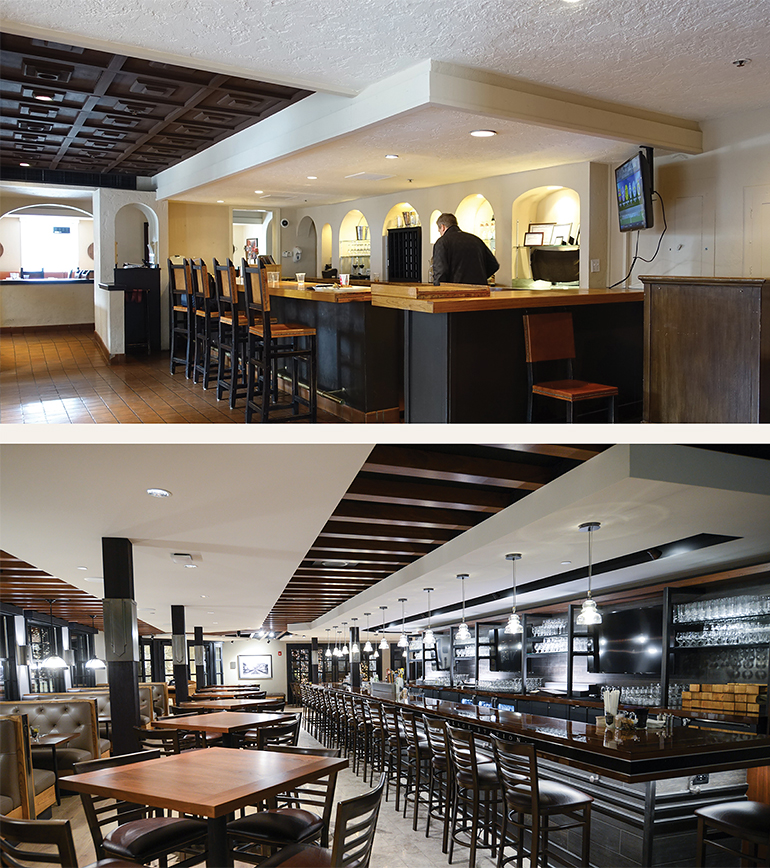 Sun Valley’s Bald Mountain Pizza (before, at top) turned into the Village Station (after).
Sun Valley’s Bald Mountain Pizza (before, at top) turned into the Village Station (after).
It also has a fascinating “Wall of Firsts” where guests can see the plans for the original chairlift, those first goggles, and even learn the story of the Hokey Pokey. The Wall blends well with other, more modern touches. “We wanted to honor the past, not live in it,” Snyder recalls. That’s a good lesson: Most ski areas have a fascinating history. When updating a space, embrace that history to tell a story, but welcome the new.
Sun Valley also renovated The Ram. Founded in 1937, it might be the longest continually operating restaurant at any North American ski area. That’s why the most notable historical update was to the food. In their interviews, Snyder says, they discovered a longtime piano player had saved Ram menus for decades. Combing through them, they found classic dishes (such as goulash) and created the “Ram Heritage Menu,” which provides a taste of history, and some great talking points for staff.
“This has really helped our village,” Snyder says of all the updates. “People were leaving to go to town. And as much as we love and want to support town, we needed a place where people could wander up and down the village and then find a nice family dinner for even just $10 a pop.”
Windham: Let the Light Shine
When Chip Seamans stepped in as Windham Mountain’s (N.Y.) new president about seven years ago, one of his first priorities was to give the Legends Bar and eating area a major overhaul. Back then, he says, the bar was rectangular and faced away from the beautiful views. And the overall feel? “It felt crowded and dark and old, with those green and gold colors of the 1990s,” he says.
Windham engaged design and build firm Three Dimensional Systems—aka 3DS—for the project, and the vision evolved. “We had a pretty good idea of what we wanted, but they elevated it,” Seamans says of 3DS.
Ross Ireland, 3DS principal, thinks collaboration is vital. “I’m not a genius,” he says. “I come to the resorts and they think I’m going to have all the answers. I don’t. They do. They just need someone to help them all sit down, share, and figure it out. I’m like a group leader. I get it all on the table.”
Today, thanks to that process, the once dark, old, and inflexible space is now two distinct spaces—one side faces the mountain and the other looks out on the valley, complete with a valley map to help guests learn what they are gazing upon. It’s much more open and bright, and one side can be used for private functions while the other is used by the public.
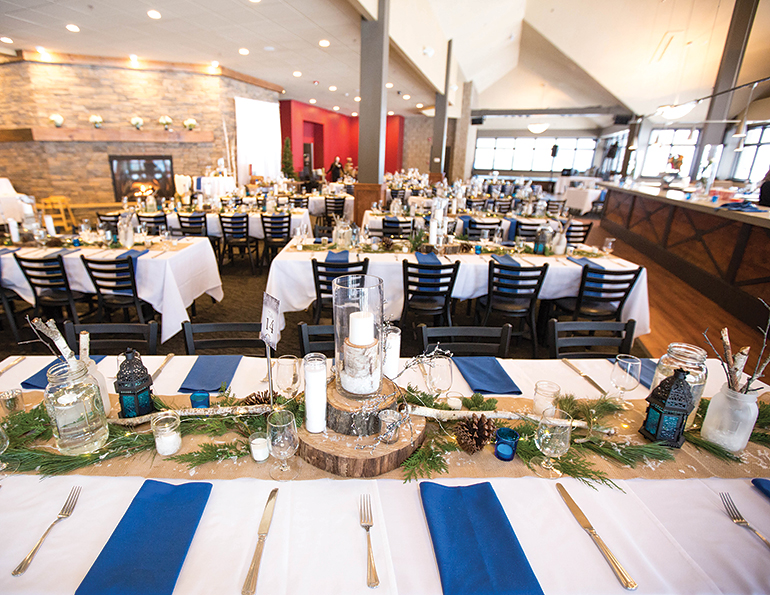 Windham’s Seasons Restaurant (and two bars) replaced the Legends Bar.
Windham’s Seasons Restaurant (and two bars) replaced the Legends Bar.
“It has exceeded our expectations,” Seamans says. “We’ve seen a pretty significant increase in business and a pretty quick return on investment.” To be specific, the total number of seats in the restaurant increased 5 percent, but revenue the first year after renovations jumped 25 percent, amounting to a 17 percent increase to the bottom line.
Seamans says they invested in things the guests might not notice, too, such as adding a service bar behind the scenes for table service drinks to be made, rather than burdening the bar area.
Squaw Valley: Elevated Experience
“We had a million-dollar view in a one dollar building.” That’s how Squaw’s VP of resort services Mike DeGroff remembers the resort’s High Camp, a lodge at the top of the tram that had not been updated since 1985. And so, he says, “We decided we had to touch every surface” to bring the facility up to snuff.
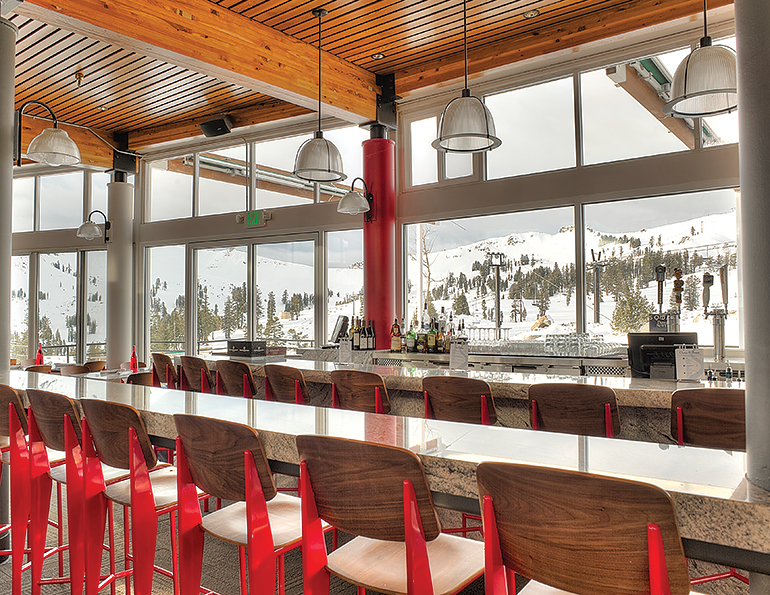 Granite Bistro at Squaw boasts epic views.
Granite Bistro at Squaw boasts epic views.
High Camp has an outdoor pool and hot tub that are only open in summer. A space overlooking the pool that had gone unused in winter became the Granite Bistro—a refined bar and dining spot with big windows and great views. Situated at 8,200 feet, it is now a prime venue for private functions. But even with those views, that wasn’t always the case.
“It used to be that brides and their moms would come up there to look, and they would literally wrinkle their noses and say ‘no,’” says DeGroff. “Today? All we have to do is bring them up to High Camp and they’re sold.”
Like Sun Valley, Squaw was careful to hold onto the old as well. “We maintained the architectural elements from the era,” he says. “We just cleaned things up and softened it a bit” by using muter, more aesthetically pleasing colors, and by letting light flow into rooms.
And, like Sun Valley, Squaw wove the old into the new. One wall features art made of pieces of the Olympic Rings, and carpet in High Camp has a pattern that suggests the shadows of those rings. Simple, understated, yet meaningful.
Fixing the Flow
From a practical standpoint, the Arc cafeteria in Squaw’s Gold Coast Lodge had a major problem: its single entrance was so narrow that it caused confusion on busy days. Frequent visitors knew they could squeeze past the entrance line and go directly to the various stations inside. New visitors thought they had to stand in line. This actually caused altercations between guests.
The solution was simple: double the width of the entrance. People now understand the flow, and the space functions as intended.
It’s important to note that the solution to this type of issue may not be as obvious to resort personnel who see it everyday. Sometimes, it takes another set of eyes to identify what the problem is, and to come up with a solution, as 3DS helped Squaw do here.
DeGroff says all of the changes they’ve made to F&B spaces and food options are necessary to keep pace with changing customer preferences. “Thirty years ago the expectation was you were going to get a crappy expensive hamburger,” he says. “Today, the expectation is you are going to get a really good expensive hamburger.”
He points to the food and beverage upgrades at ballparks as an example. “Boomers expectations grew,” he says. “They now want fine dining [while out skiing] and to have a glass of wine actually in a glass.”
Ireland agrees. “The expectation of the guest has risen,” he says. “It used to be all you needed was a spot to sit down and open your brown bag lunch. Now, people are way more sensitive to cuisine. Millennials eat out all the time. They know food; so it better be good.”
Stratton: Raising the Bar
Back to Stratton, where a few years a back, the base lodge was crowded and not flowing well. Today that’s all changed after a massive expansion that went up rather than out. Another level was added to the main base lodge; general dining and seating on the first floor was expanded; and après hotspot Grizzly’s Pub got a total overhaul.
The main floor’s former scramble area—the open area in a space such as a cafeteria—was crowded and accessible from just one entry. Now it’s more open, with four different food areas and an updated kitchen.
In addition to higher quality, fresh food, says vice president of hospitality Jan Giejda, the added kitchen space in the new setup allows Stratton to commit “to scratch cooking across the resort as a whole at about 95 percent,” something that was once a pipe dream because of tight kitchen space.
Upstairs at Grizzly’s, the new bar is pulled back from the floor-to-ceiling windows that look out at the slopes, which allows for more seating with a view. A huge staircase used to enter right in the middle of the restaurant from below; now, a narrower staircase enters at the edge of the room, and the added floor space has greatly increased seating capacity.
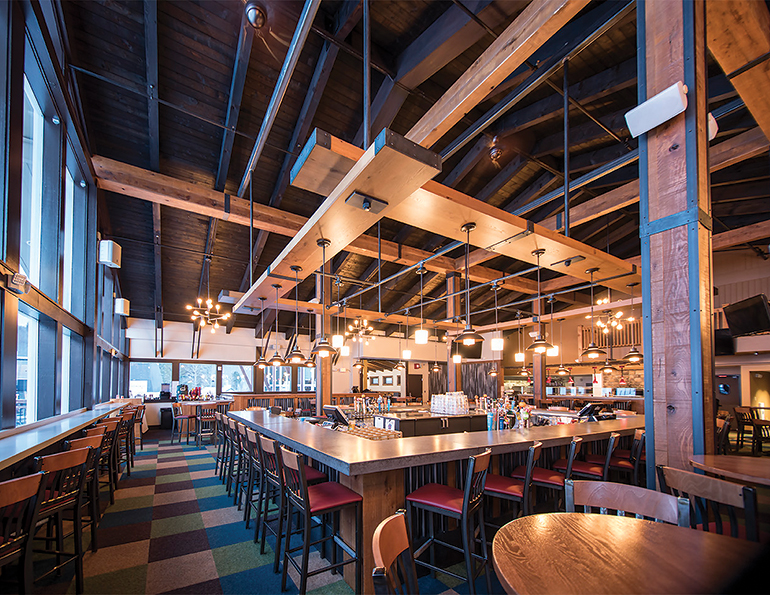 Stratton’s Grizzly’s Pub received a total overhaul as part of a $12 million expansion.
Stratton’s Grizzly’s Pub received a total overhaul as part of a $12 million expansion.
Lapointe says the $12 million price tag for the project has proved its worth: The resort’s Net Promoter Scores have soared more than 30 percent since the new space opened. “From the guest point of view, it’s been a great success,” he notes.
The key to updating F&B is a combination of knowing what new and future guests need now, and remembering what made a resort great in the first place.
Ireland thinks we are becoming, perhaps, a bit more European. “A lot of people want there to be this whole experience, not just skiing all day,” he says. “Food—and setting—is such a huge part of that. It has to be done right.”
TIPS FOR SELF-SERVE RESTAURANTS
1. Direct your guests’ attention with lighting. It’s very simple: aim lights at the food service areas, and dim the lights in the circulation spaces. Make sure the color temperature of the lamps is in the range of 3,000k to 4,000k. Focused lighting can have a huge impact on sales.
2. Get rid of the messy graphics. They slow down the decision process. Keep menu boards simple, and keep menu items to a minimum.
3. Use physical barriers and grab-and-go islands to guide traffic. Crates and boxes can make great impromptu display stands. Don’t rely on signs to direct people; signs get lost in the busy-ness of the space.
4. Impulse is everything. Have a variety of tempting treats and sundries displayed at the checkout station.
5. Make under-the-radar essentials as convenient as possible. Utensils, trays, condiments, trash, etc., should be so conveniently accessible they become a non-issue.
6. Keep everything spotlessly clean. Even if people aren’t consciously aware of it, cleanliness (or lack of it) has a big effect on their willingness to purchase.—Ross Ireland, 3DS





